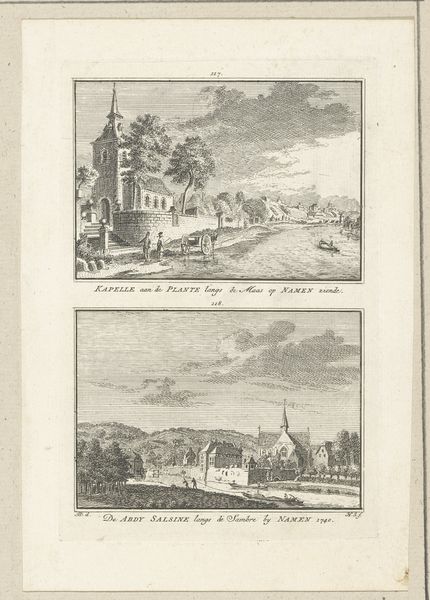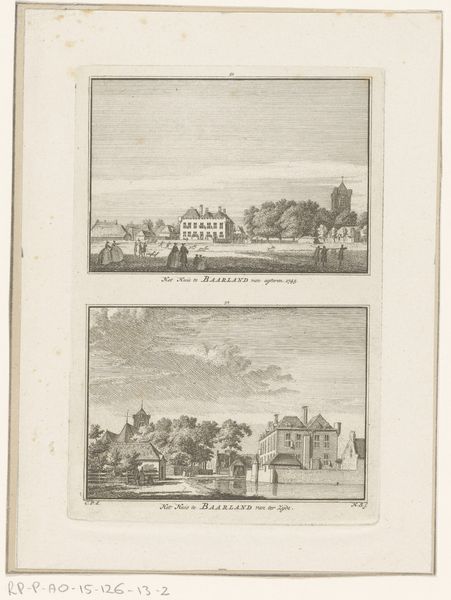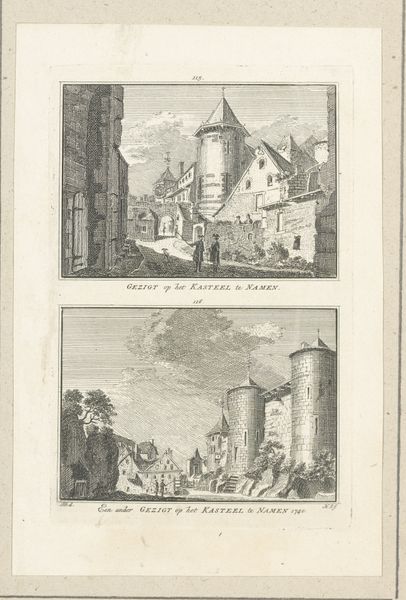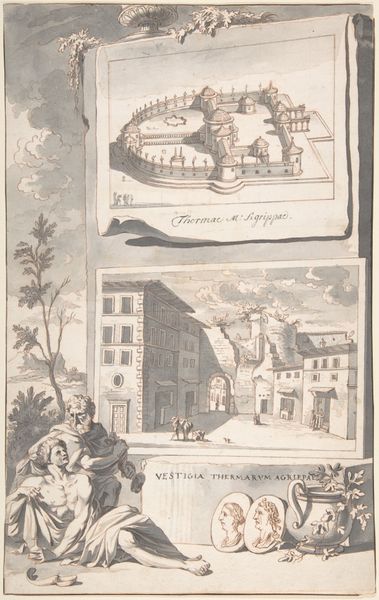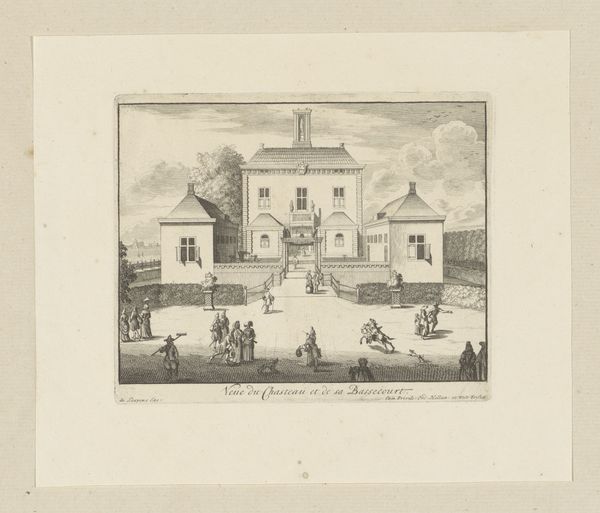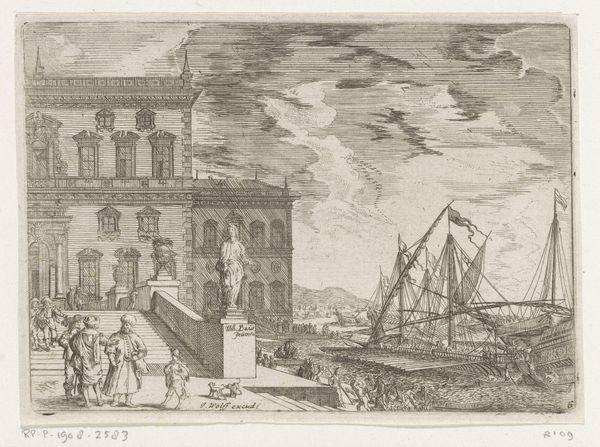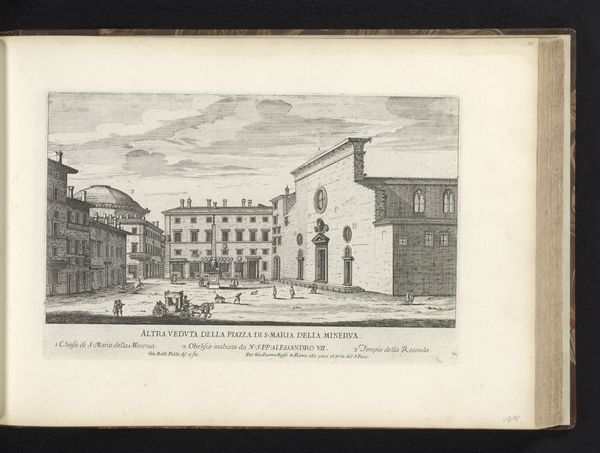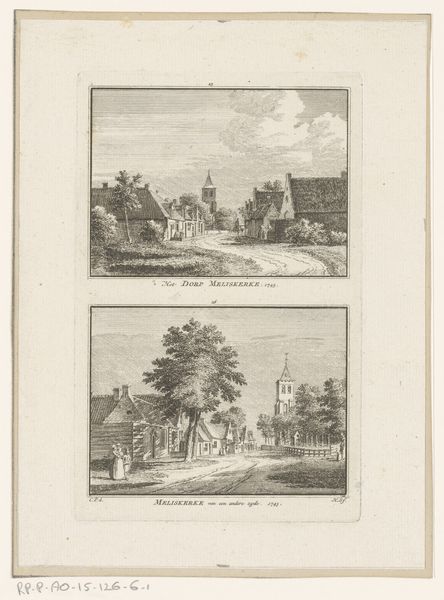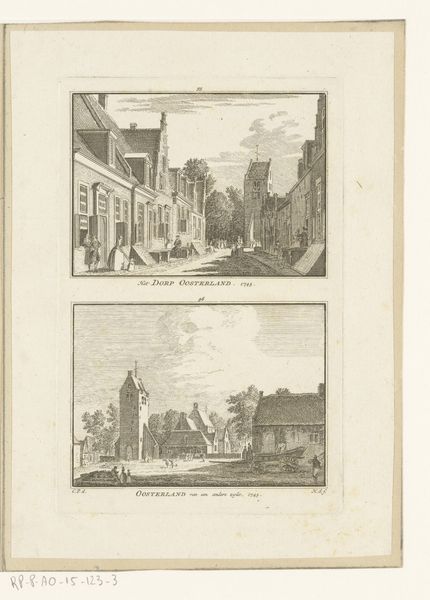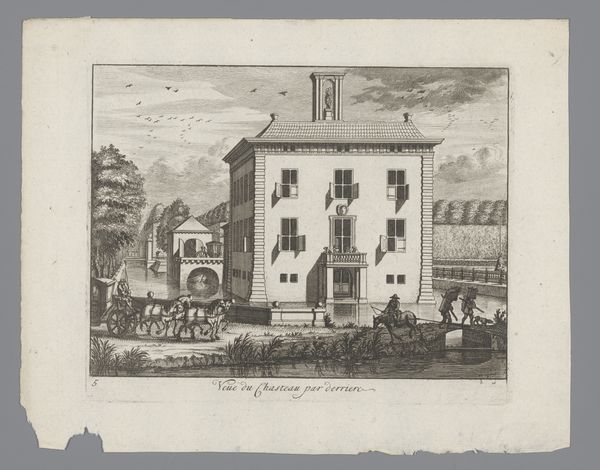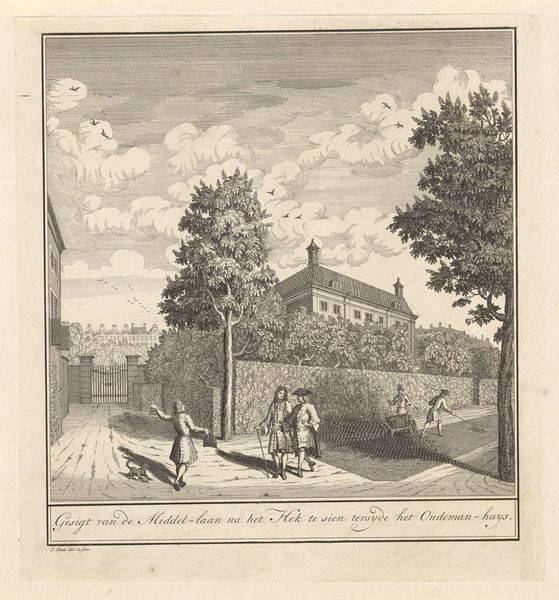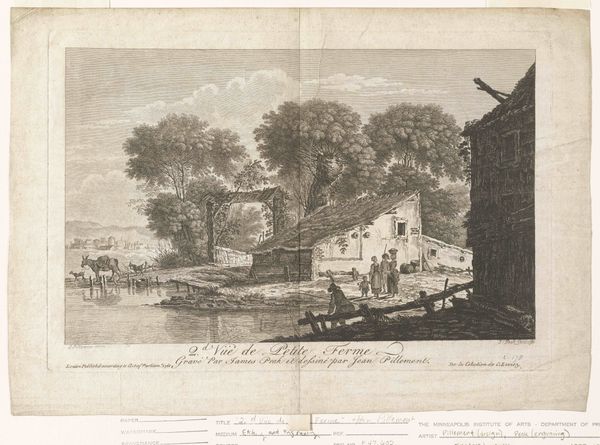
Gezicht op de poort Bord de l'Eau en gezicht op de poort Bullet, te Namen, 1740 1746 - 1792
0:00
0:00
Dimensions: height 169 mm, width 113 mm
Copyright: Rijks Museum: Open Domain
Hendrik Spilman created this print in 1740. The primary material here is the paper itself, and the ink that defines the image. But it's also important to consider the copper plate from which the print was pulled. Spilman used a technique called engraving, meticulously incising lines into the metal, which then hold the ink for printing. This was skilled, repetitive work, part of a well-established system of production. Engravings like this one, showing the gates of Namur, served a practical purpose. In an era before photography, accurate depictions of architecture were essential for military and administrative purposes. The image is as much a product of labor, politics, and consumption as any ornate tapestry or ceramic. Appreciating the work involved expands our understanding of the artwork's meaning, blurring the line between fine art and craft.
Comments
No comments
Be the first to comment and join the conversation on the ultimate creative platform.
